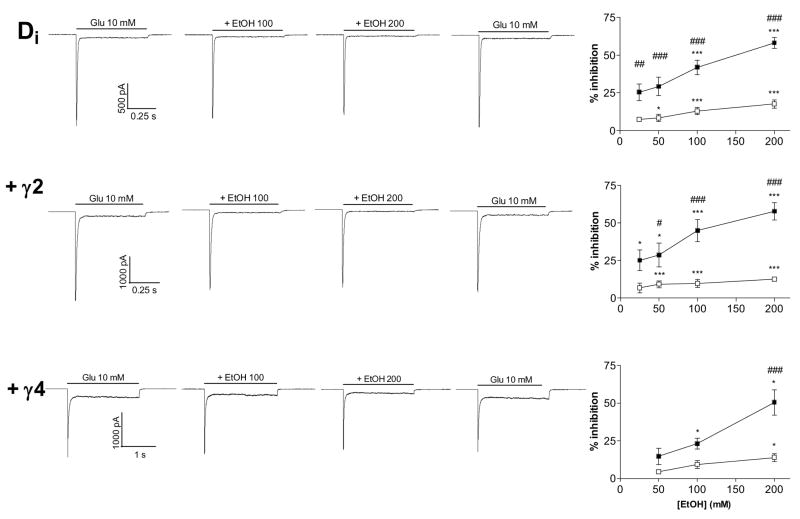Fig. 2.
Ethanol inhibition of GluR-Di receptor currents. GluR-Di receptors were inhibited by ethanol (EtOH) with or without the co-expression of stargazin (γ2) and γ4 TARPs to a similar extent. Representative traces show the effects of 100 and 200 mM ethanol on 10-mM glutamate-evoked currents. Graphs on the right panel show the results of ethanol inhibition of the peak and steady-state currents. Steady-state currents (■) are inhibited more than the peak currents (□) in all receptors. Repeated measures ANOVA found that EtOH inhibition differed between the peak and steady state currents (F1,8–10 > 5.7, p < 0.05) and that EtOH had a dose effect (F4,32–40 = 4.9, p < 0.01) in each receptor. # p < 0.05, ## p < 0.01, ### p < 0.001 for the significance of the difference between the peak and steady-state currents (Bonferroni test). * p < 0.05, *** p < 0.001 for the difference from the control current (Dunnett’s test). (n = 4–7)

